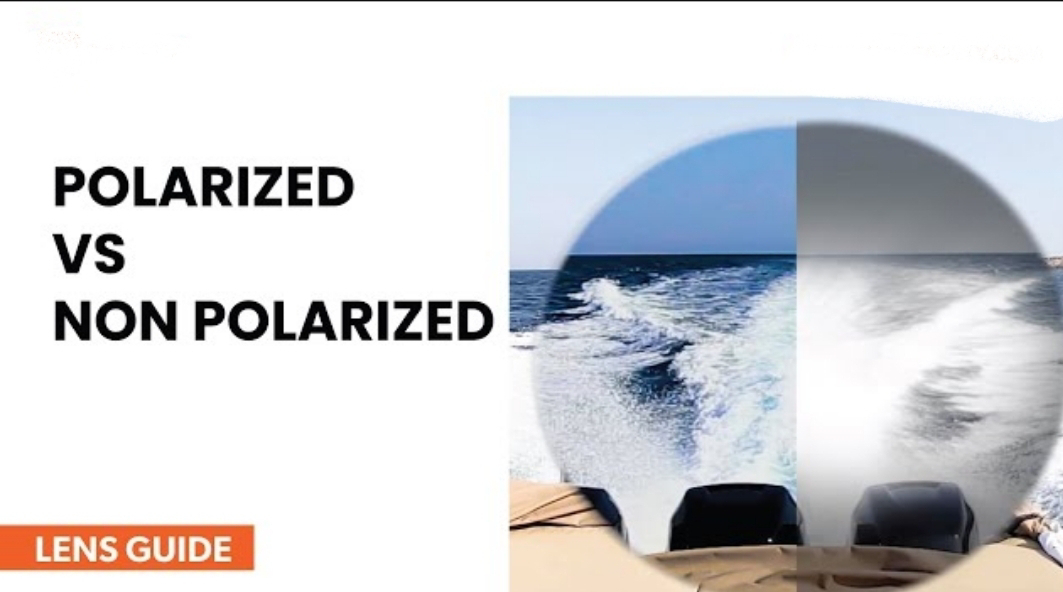Polarized vs. Regular Sunglasses: What's the Difference and Why It Matters
Hey there! For me, sunglasses are a must-have, especially when summer rolls around. But every time I go shopping for a pair, I find myself in a dilemma. I often see two nearly identical pairs, but one is more expensive because it's labeled as "polarized." So, what's the difference? What am I paying extra for?
In this video, we'll cover what "polarized" actually means, who benefits the most from polarized sunglasses, and I'll even show you some side-by-side comparisons so you can see the difference for yourself.
What Is Polarized Light?
First things first: if you already know what polarized light is, you're halfway there. But if you're not familiar, no worries! Here’s the basics you need to know for this video:
When sunlight bounces off a surface, it tends to oscillate in the direction it was reflected. For example, when sunlight reflects off the ground, the reflected light is mostly polarized horizontally. On vertical surfaces, like windows, the light is polarized vertically. If the surface is broad enough—like an open road or the ocean—you’ll get a lot of horizontally polarized light reflecting off it. This is what we see as glare, which can be so bright that it makes you squint.
Polarized sunglasses are specially designed to block out horizontally polarized light. Regular sunglasses block all light equally, but polarized ones act more like noise-canceling headphones. Just as noise-canceling headphones block out ambient noise so you can hear your music better, polarized sunglasses block out glare while letting you see everything else more clearly.
When to Use Polarized Sunglasses
Polarized sunglasses are particularly useful for people who deal with a lot of glare in their day-to-day activities, like truck drivers, fishermen, and skiers. These people spend a lot of time near highly reflective surfaces and need clear vision to perform their tasks effectively. Polarized lenses can also be helpful for athletes like golfers or tennis players, as they reduce glare and make it easier to see the ball against the background.
Seeing the Difference: Side-by-Side Comparisons
Let’s dive into some examples to see polarized lenses in action.
Over Water: In our first example, we're above a large body of water. Notice that with polarized sunglasses, the water isn’t as reflective, reducing the glare. This is because the lenses are blocking horizontally polarized light reflected off the water.
Color Enhancement: In another example, you can see how polarized lenses enhance colors. Because they reduce reflections, the colors appear more vivid, like the blue of the water looking richer.
On Grass: Polarized sunglasses aren’t as effective on surfaces like grass because grass isn't as reflective as water, roads, or snow. However, you can still notice subtle differences in contrast, which makes the trees stand out more against the background.
Facing the Sun: For our final examples, I deliberately faced the sun to maximize glare. Notice how reflections from cars and the road aren’t as blinding with polarized lenses. Roads and sidewalks can be particularly harsh when facing the sun, and polarized lenses do a great job of reducing that glare.
How We Filmed These Comparisons
In case you're curious about how we filmed these examples, I used a linear polarizing filter on my camera for the polarized shots. To match the exposure of regular sunglasses, I used a neutral density filter.
Conclusion
I hope these examples have helped you understand the differences between regular and polarized sunglasses. Personally, I use polarized sunglasses all the time. In fact, the pair I have is photochromic, meaning they’re clear indoors and turn into polarized sunglasses outdoors. They've been a game-changer for me!



Comments
Post a Comment